The Best Reimagined Horror
At the mere mention of a “must-see” horror remake some launch into critical commentary. Undoubtedly, others say it all with an eye roll or facial twitch. As a result, of the myriad opinions, getting everyone at the table to agree on the order by which the remakes should land on the ‘best-of’ list is next to impossible. Take the guesswork out of which reimagined horror films have made the cut as the best remakes. Wheresthejump.com curated the top 20 horror remakes you must see. Contrary to the critics and eye-rollers, here is a list of the best-reimagined horror ever made, and they must be seen to be appreciated!
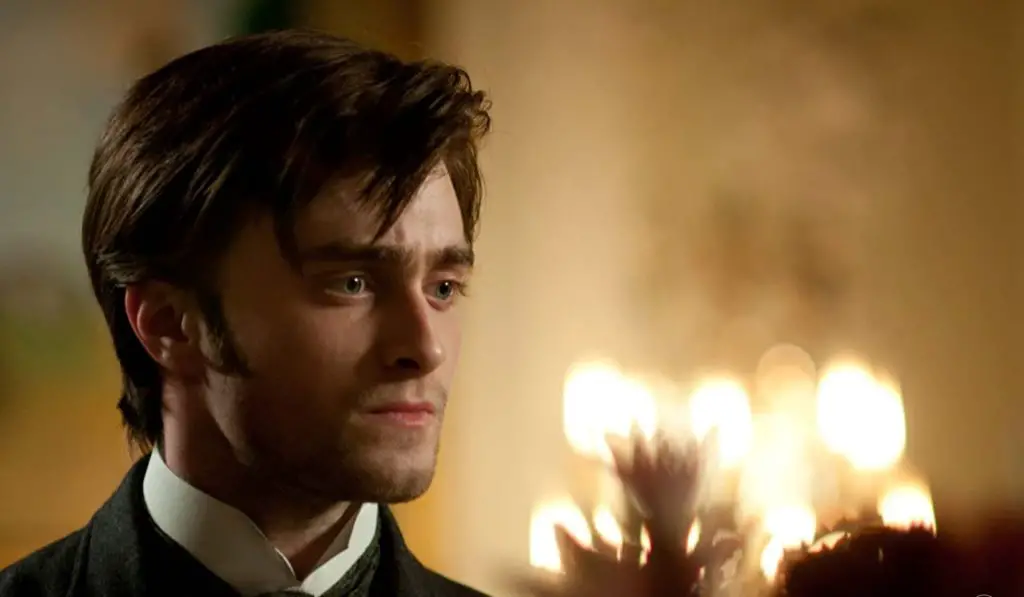
Must-See Original Horror
#20 – The Woman in Black (2012)
Daniel Radcliffe plays a young lawyer named Arthur Kipps. After a series of horrible unexplained suicides in the English village of Crythin Gifford, Kipps visits the town to retrieve documents related to an abandoned estate. First, he’s met with unwelcomed coldness from the villagers. Second, upon revealing his wife’s death during childbirth, the village, besieged by strange apparitions, falls victim to more unexplained deaths. Finally, the finger of blame points to Kipps. Filled with jump scares, a fantastic score and costumes, striking cinematography, and beautiful FX gently woven in to create a chilling atmosphere, The Woman in Black stands as a testament to re-creating an original horror film steeped in literary roots and popularized by the second longest-running play in London.
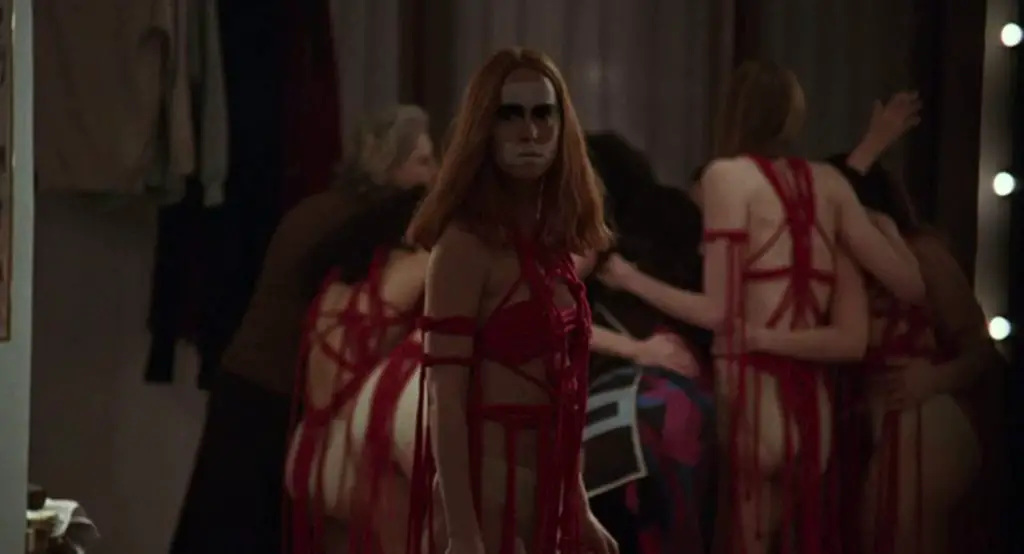
Must-See Trainwreck Horror
#19 – Suspiria (2018)
The original Suspiria was oddly discomforting. A trainwreck version of Black Swan (2010) from which you cannot turn away. But it possessed an almost operatic quality. A prestigious German dance academy, rumored to be established by a witch, accepts an innocent American student named Suzy Bannion. The original film is a supernatural horror supported by unsuspecting shock cuts, colored lighting, and peculiar camera angles. Owing to the original, but toned down using muted colors, the remake is a full-blown experiment in the abstract, hollow of anything remotely personal, or human. Which makes it much more uncomfortable to watch than the original.
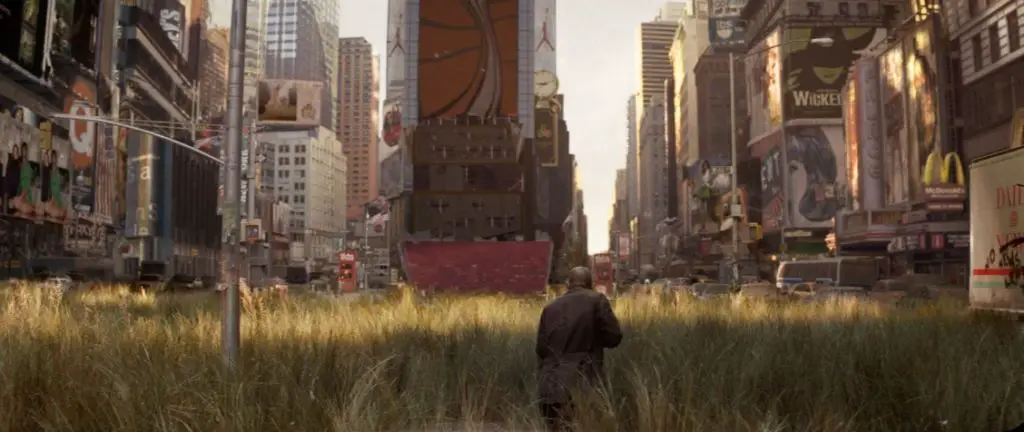
Legendary Must-See Horror
#18 – I Am Legend (2007)
I Am Legend can be traced back to a novel by Richard Matheson, and two films. The Last Man on Earth (1964) starring horror master Vincent Price, and The Omega Man (1971), starring 70s mega-movie star Charlton Heston. Post-apocalyptic, virus-ridden undead vampires are the basic premise of the films that inspired I Am Legend. Whereas, Price’s film reads more like Blade (1998), Heston’s features infected nocturnal mutant albinos. In the latest remake, Will Smith plays Robert Neville roaming a destroyed Manhattan after 99% of humanity succumbs to a lethal cure for cancer. By day he works tirelessly running experiments; at night, avoiding the infected Darkseekers. Legend relies heavily on CGI FX. However, it wallops the first two films with star-spangled, action-packed, non-stop “Will Smith” sequences.
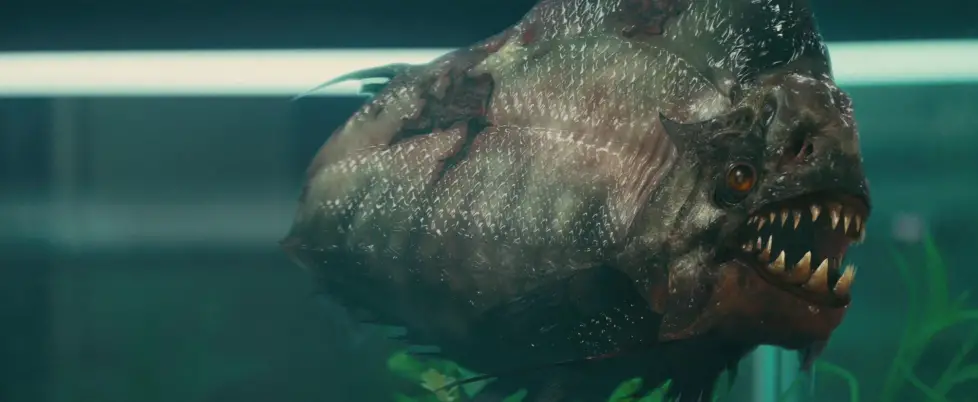
The Must-See to Believe Horror Remake!
#17 – Piranha 3D
What Jaws did for Amity beach, Piranha 3D did for Lake Victoria. Owing to its predecessor, Piranha (1978), and inspired by “that ”Great White movie,” P3D” features an incredible and unexpected all-star cast. Moreover, the film is also a sincere hat tip to the once-upon-a-time B-movie. After a minor earthquake opens a fissure under a lake, the diver sent to investigate is eaten alive. The gruesome discovery of a fisherman’s mutilated body sets the plot in motion. Spring Break. 20,000 horny college kids partying and screaming, “take it off!” The sheriff wants to know how prehistoric Piranha got in her “GD” lake. She radios the deputy to close the beach—fat chance. What ensues is a tornado of nauseating FX. The original Piranha (1978), a satire of Jaws, has spawned an enormous cult following and a worthy franchise. Grab your 3-D glasses. It’s worth the price of admission seeing the messy gore fly out of the screen.
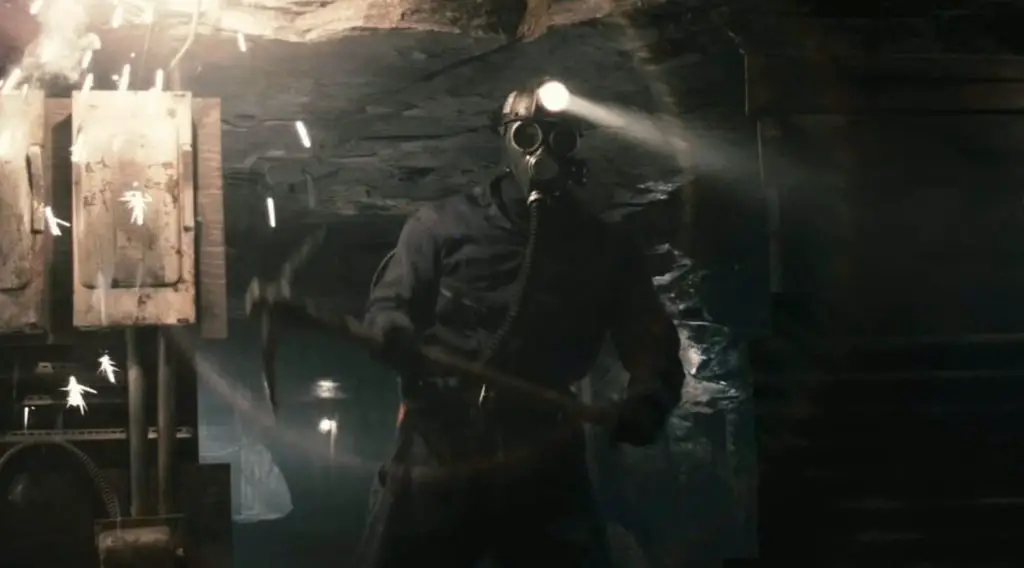
Bloody Good Horror
#16 – My Bloody Valentine (2009)
My Bloody Valentine is the second film on the best remakes list that opted for 3D. The plot of the film is odd. A crazed miner terrorizes a small mining town during an impromptu Valentine’s Day party. One part The Fun House (1981) two parts Prom Night, with a dash of Halloween, “Valentine” is a stock horror formula. Writing for Montreal’s The Gazette, critic Dorval Loews wrote, “All that’s really notable about My Bloody Valentine is that it gives you more than the usual m.p.g.p.—murders per gallon of popcorn.” Mediocre review for a standard 80s slasher. Until director Patrick Lossier gives his remake the 3D treatment, he removes the theme party and adds an explosive and turbulent story of greed, murder, and revenge. The film is told in two acts working steadily to build tension and create a dark, hostile atmosphere while bridging the gap between vintage and modern horror genres.
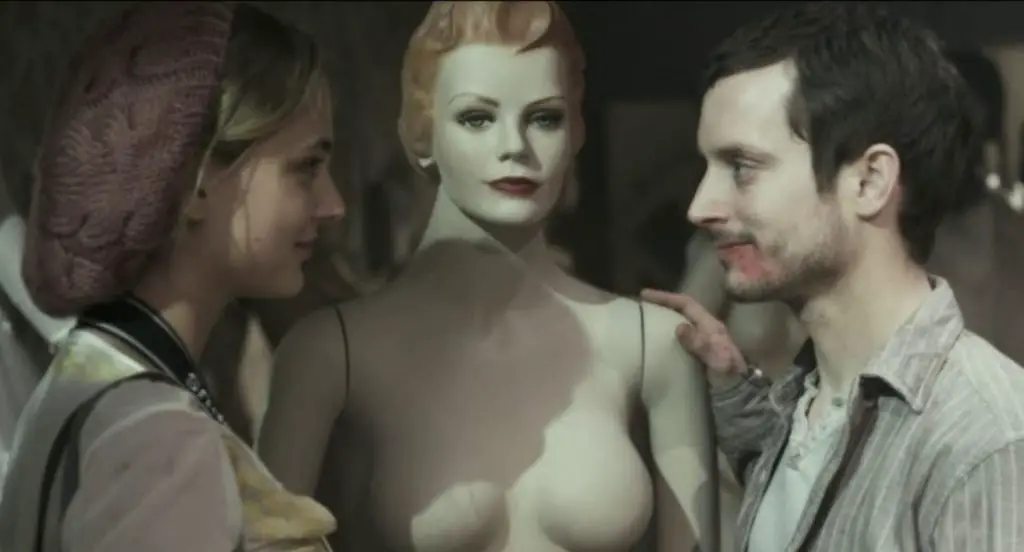
Mannequins and Maniacs
#15 – Maniac (2012)
Look way back in the back of the remake vault, and there sits the gem that is Maniac. Nothing like some childhood trauma and being forced to watch a desperate mother-turned-prostitute have sex with her johns and then end up forming a scalping fetish. A broken child must grow up collecting tokens and having fond memories of brushing his mother’s hair before she “went out” at night. Fortunately, Frank also inherited a mannequin factory. Panned for its gratuitous violence, praised for its vision and boldness. A celebrated horror movie moment on top twenty lists since its release in 1980.70% of the reimagined Maniac, filmed in first-person POV, gives the audience an incredible sense of “being the killer.” The film is a sleazy, desperate, and at best, horror version of Beauty and the Beast. Times have changed; the reimagined Maniac is slicker and sleazier, less cheesy, and much more bloody and perverse than its predecessor in every single maniacal way. Elijah Wood takes center stage as Frank “the maniac” in a film unanimously described by critics as beautiful.
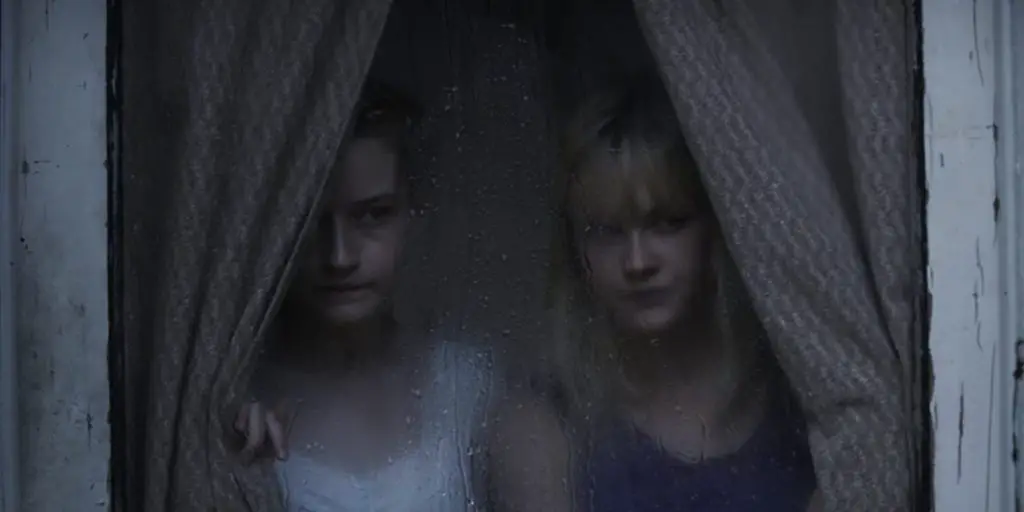
The Family that SLays Together
#14 – We Are What We Are (2013)
The family that prays together stays together. Meet the Parkers. Frank is a widower and father of three, besieged by grief after the unexpected death of his wife. His daughters, Iris and Rose, are good girls; they do what they’re told and follow the word of God. As the family heals, the discussion of carrying on family traditions divides the sisters. Reluctant and genetically predisposed, they agree to kill, butcher, and eat a young woman abducted by Frank. Pared down from the original Mexican film, the reimagined We Are What We Are relies on minimalist FX and downplays the need to exacerbate the story with gratuitous violence. However, the Parker family’s restrained approach to cannibalism is the confectionary gorefest! Scott Weinberg of Fearnet called it “a trenchant and fascinating indictment of how religion can brainwash and poison even the most innocent of souls.[1]” Amen.
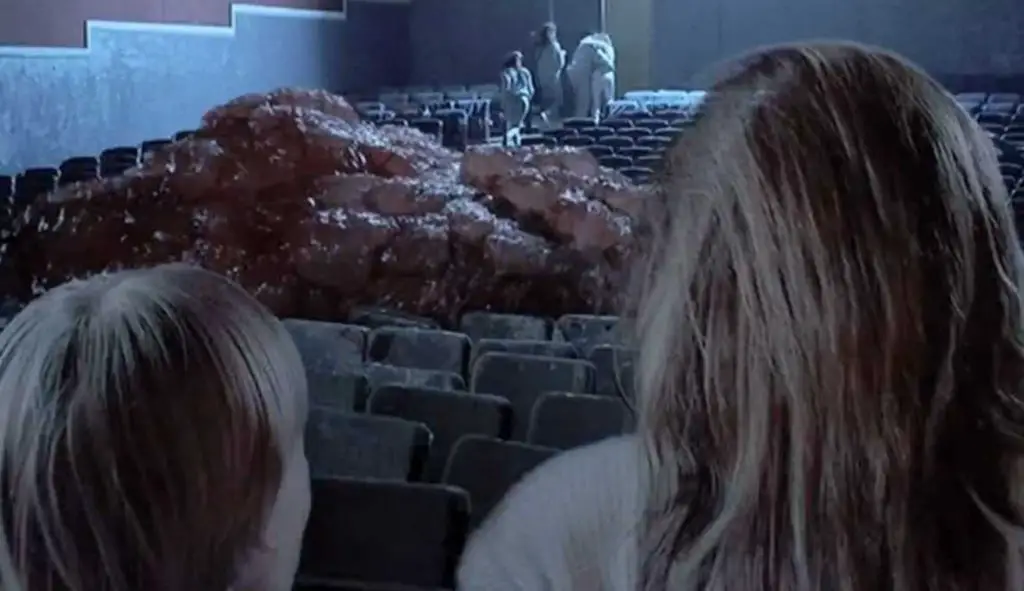
Must-See Retro Horror
#13 – The Blob (1988)
Say what you will about a grape jelly-like ectoplasmic killer that drops from the sky, via a meteorite, and then rolls through town absorbing everything in its path. Don’t worry, it won’t be offended, this kind of “terror has no shape,” and it doesn’t have feelings. Horror was just getting started in the 1950s. The Blob (1958) had chutzpah. It set the bar for decades of horror films to come. Critics were mixed, but overall it’s a cornerstone in the science fiction horror genre and has sustained a cult following. The remake adds a spirited dash of tongue-in-cheek comedy and overall the film doesn’t take itself too seriously. The Blob ‘88 is way more violent, more Hollywood spectacular, and even holds a cynical tone throughout. It is “more patently commercial and more attentive to detail. A gracefully repulsive B-movie upgrade with 80s centric special effects and a funny jab at anti-governmental interventions for the sake of science.[2]”
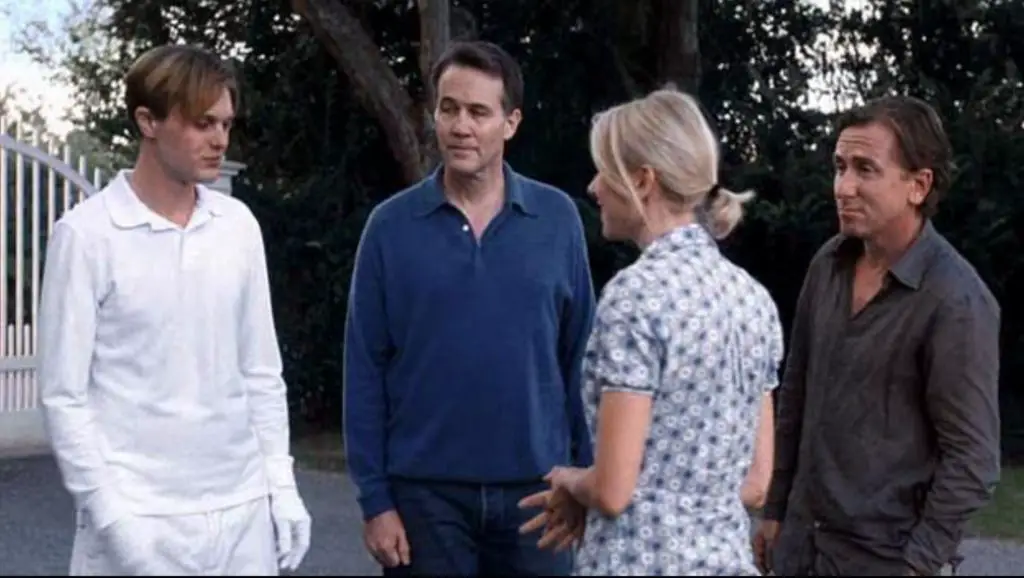
Nothing Funny About This Must-See Horror
#12 – Funny Games (2007)
Remaking a horror film shot-for-shot is tricky. Critics hate the concept. Fans struggle to rationalize why. However, many directors find the process a cathartic experiment. Instead of converting a horror movie he admired, Austrian filmmaker Michael Haneke remade his Palme d’Or nominated film! Haneke exercised complete control, using the original film’s house, props, and color tones. An innocent family, simply trying to enjoy some time at their lakehouse, willingly allows two friends, Peter and Paul, inside to “borrow eggs.” Entrance into their home becomes voluntary and regular. Soon the brazen friends unleash a rabid and uncontrollable assault on the family. Haneke willingly provokes the audience into submission throughout this unsettling remake, upping the uneasiness with unrelenting brilliance. And it works like a charm.
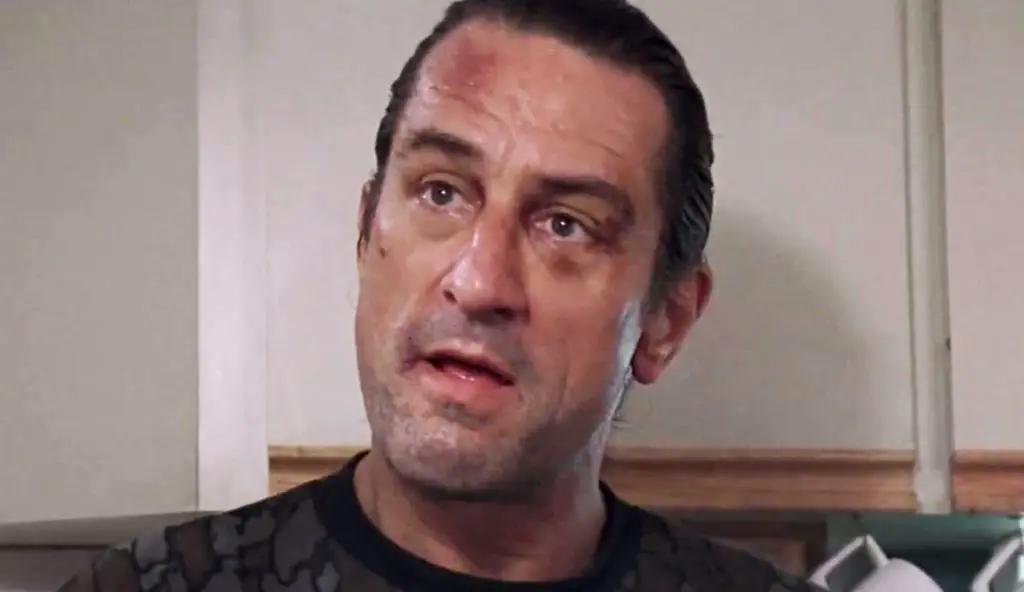
Classic Must-See Scorsese Horror
#11 – Cape Fear (1991)
When director Martin Scorsese was remaking Cape Fear, he was “the” director, doing his filmmaking best. He would grab hold of Cape Fear with a vengeance and add his revered nuances and personal style. Big names – Nick Nolte, Jessica Lange, and Juliette Lewis in a head-turning performance, portray the Bowden family. The vengeful Nick Cady, an illiterate criminal-rapist was sentenced to prison by the Bowden patriarch. An imprisoned Cady teaches himself to read the law and loopholes himself out of the clink and into freedom. The original shied away from the violence, operating more like a noir thriller. Scorsese’s version makes Cady a shamefully sociopathic serial stalker thirsty for a painful and bloody kill. The original teaches forgiveness. The remake exposes a vulnerable and threatened father and cheating husband on a mission. Cady ultimately pokes the bear, setting the taunted father off, and boy does he go off! PS: Scorsese cast three of the main characters of the original Cape Fear. Classy.
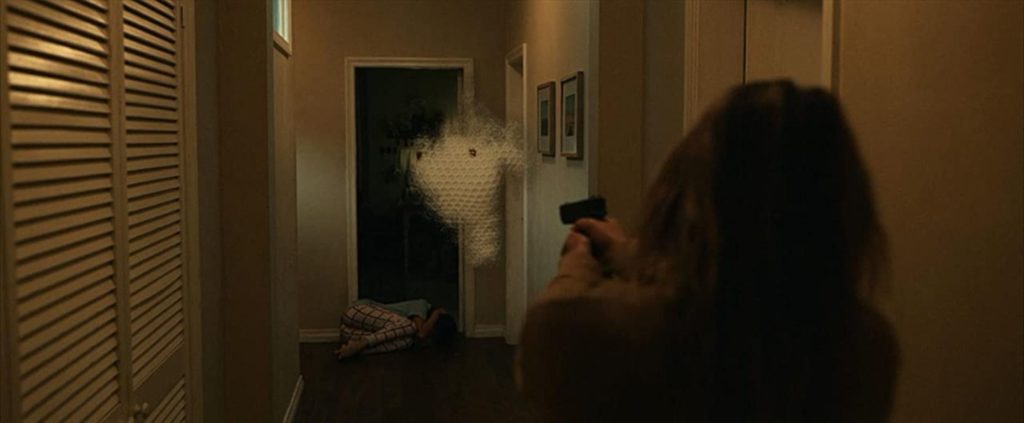
What You Can’t See Will Kill You!
#10 – The Invisible Man (2020)
Before The Blob, Tinseltown brought a first-of-it’s-kind science fiction horror to the silver screen in 1933. A mysterious stranger, completely wrapped in bandages and wearing dark glasses, takes a room at a remote inn. One day, his landlady accidentally “sees” him. With nowhere to hide, he returns to his laboratory. He reluctantly shares his secret experiment with his fiancé and fellow scientists. As time passes, what initially seems like a fun and harmless “invisible man prank” drives the scientist to insanity. Believing he is invincible, the madness shamelessly drives him to commit murder. Cut to 2020. The only bit of the story remaining in the remake of The Invisible Man is the secret science experiment. The reimagined film focuses on a wife under the constant watch of her husband, a violent and controlling optics engineer. After escaping her home she is relentlessly harassed by an invisible stalker. Forced to prove who or what is hellbent on destroying her, the film cleverly turns the tables, choosing to portray the slow erosion of the wife’s insanity instead of the invisible antagonist in the original film.
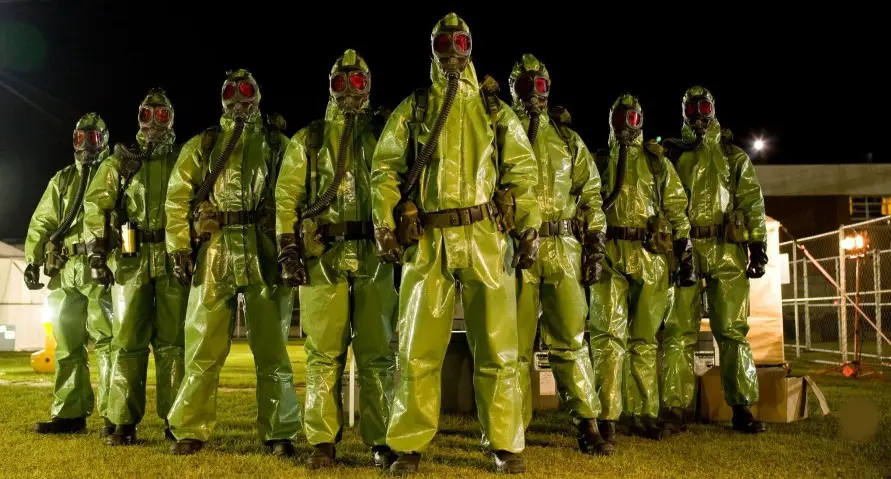
Crazy Must-See Horror
#9 – The Crazies (2010)
The deadly-virus-zombie combo is tried and true, and often the most overused genre. For example, World War Z (2013), 28 Days Later (2002), then 28 Weeks Later (2007), and the hilarious Shaun of the Dead (2004). Of course, most of master horror director George Romero’s catalog are delightfully undead films. Romero also wrote, directed, and edited the original The Crazies (1973). There is a stark contrast between the two films. But, one scare they share, is tightly wound tension. Soon after a sickness burns through a small town, murderous side effects start an avalanche of terror. Military forces arrive and begin containing the town. The original relies on Romero’s minimalist directing style. It doesn’t quite terrify like the remake, which goes full throttle for the jugular, instilling palpable heart-racing fear with agonizing moments of mistrust between the characters. Including a brilliant performance by actor Joe Anderson as Deputy Russell Clank, holds a place in the horror history books for an intelligent and passionate performance that simultaneously radiates torment, paranoia, and denial.
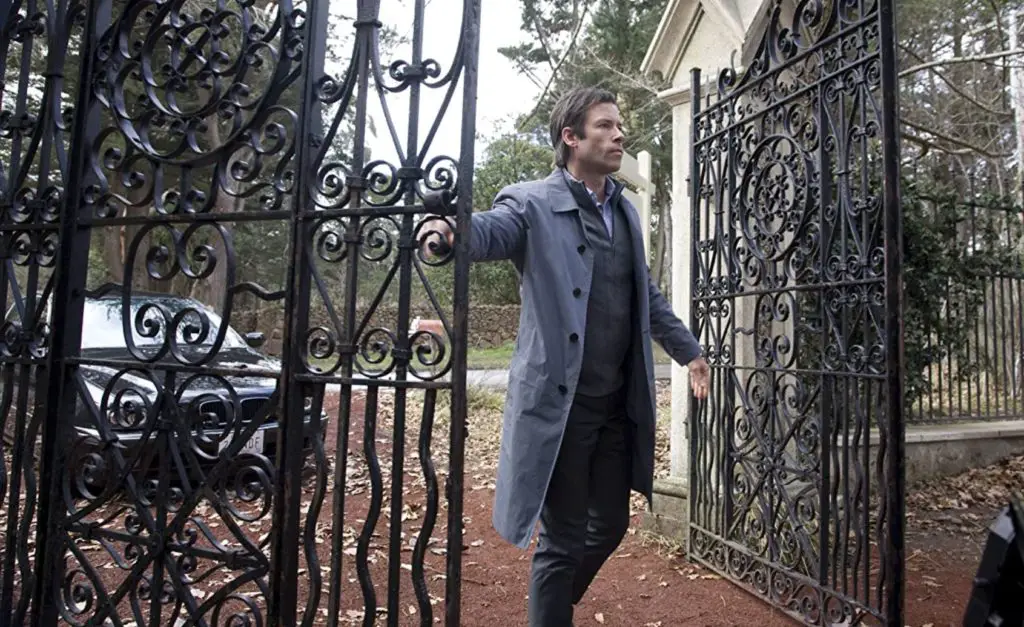
Be Very Afraid!
#8 – Don’t Be Afraid of the Dark (2010)
Dad and his girlfriend inherit an old fixer-upper, a stately manor built in the19th century. The problem is the house has a history. 100 years later the strange terrifying monster that lives in the basement, in the furnace’s ash pile and loves sacrificial offerings, mostly children’s teeth, is, well, still in charge – unbeknownst to the new owners. What started as a television movie in 1973, became a reimagined telling of a dark, ominous haunted house horror tour de force. That is to say, it was conceived from acclaimed horror-fantasy writer and director Guillermo del Toro. His cranked-up creepy atmospheric underpinnings lay bare a hell of a haunted mansion masterpiece. The television version has some incredibly indelible moments. The reimagined film takes del Toro’s terrifying childhood recollections of the original, and stamps it with the rated-R badge of honor. It has been declared by movie executives and fellow directors as a “pretty damn good horror movie.”
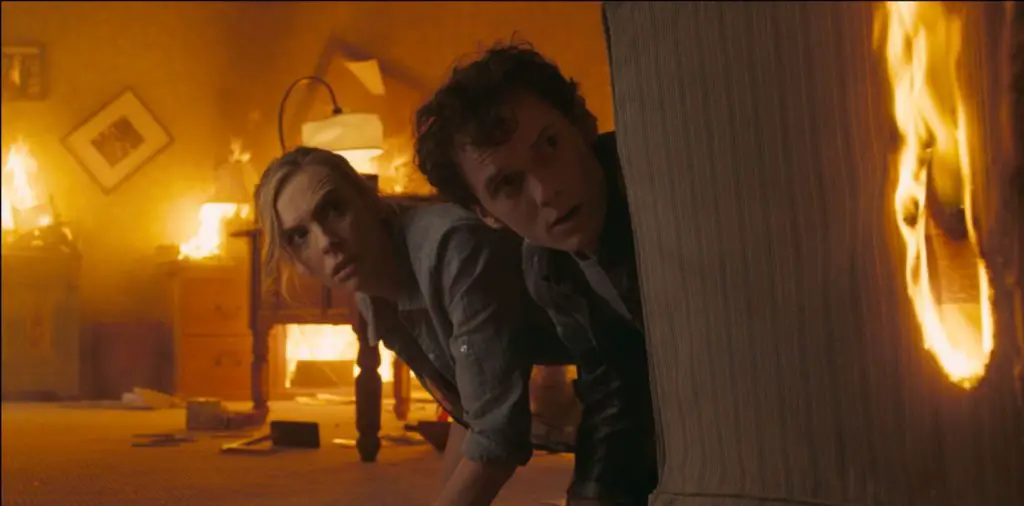
Nailed it!
#7 – Fright Night (2011)
When the conversation turns to the greatest special effects used in a horror movie, a few films immediately come to mind: Alien (1979), The Thing (1982), American Werewolf in London (1981), and The Fly (1986). Fright Night belongs on the list for two reasons. First, the film modernized the vampire genre with a fresh, fun new story while embracing classic vampire lore. Second, it was made in the mid-eighties, the pinnacle of cutting-edge prosthetics, makeup, and robotics to create unforgettable horror FX. The new Fright Night feels darker and more ominous. Vampire Jerry Dandridge comes off a tad more hungry and homicidal. The original leaned heavily on comedy, while the remake dashes in a heavy dose of action. Relying less on wit, and the original’s homage to classic B-movie magic, it also amps up Jerry’s sex appeal and portrays vampire hunter Peter Vincent as a mouthy and overtly cynical magician, oozing goth angst. A great example of how to pay homage, and peel back the layers to expose a classic to an entirely new generation of horror fans.
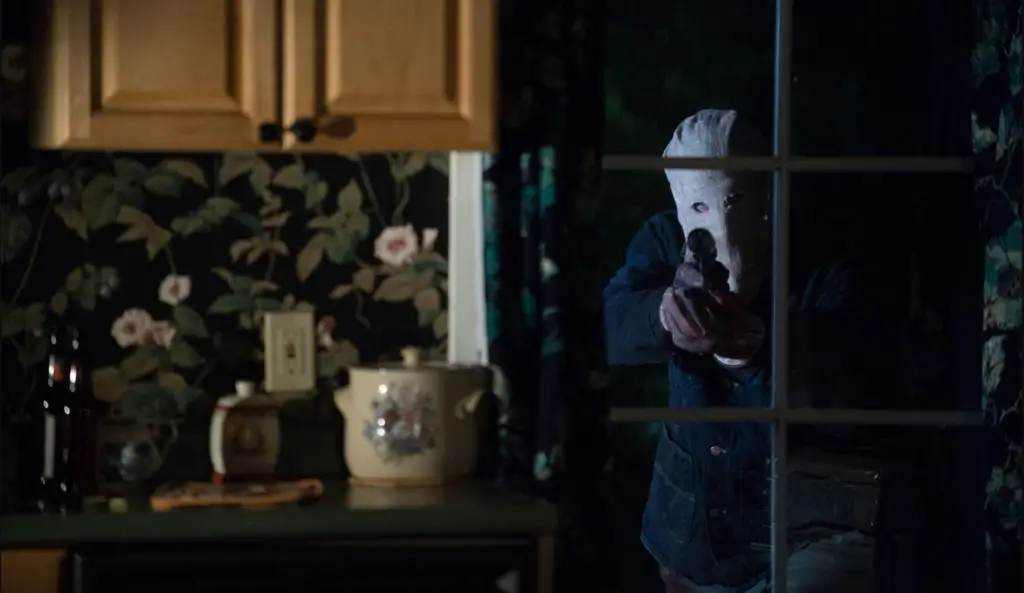
Must-See Horror within a Horror within a Horror
#6 – The Town that Dreaded Sundown (2014)
Welcome to Texarkana! The townsfolk are celebrating Halloween. They’ve gathered at the drive-in theater for the annual showing of ‘The Town That Dreaded Sundown.’ To begin with, the film chronicles the true story of a Phantom Killer, responsible for the deaths of several people in their town in 1946. On this night, life imitates art. The Phantom Killer has returned. In fact, the Town that Dreaded Sundown, is not only a meta-sequel, it’s a brilliant remake. The plot not only picks up where the original film left off but contains a non-fictional/fictional element of a film within the film. The fact that the camera pans down to expose someone in line wearing the same boots, as the Phantom Killer, waiting to buy a ticket to the premiere of the film ‘The Town that Dreaded Sundown,’ has never appeared on screen before or since. Critic Gregory Burkart writes, “director Gomez-Rejon is on top of a visual game here, keeping the camera in constant motion and disorienting the audience with jarring angles, floating POV shots, and distorted lenses. Simply put, the grim mood is surreal.[3]”
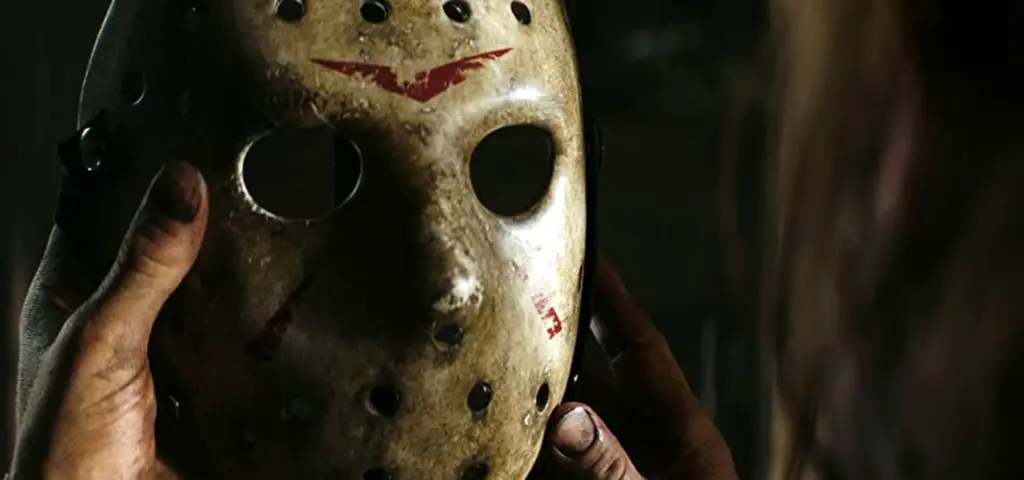
Voorhees Forever!
#5 – Friday the 13th (2009)
Bates, Leatherface, Myers; slasher horror has seen its fair share of evil incarnate. Obviously, the slasher genre made a big splash in 1980. Three major studios would fight over a small independent film. The film’s plot was simple; six camp counselors are stalked and killed while reopening the abandoned Camp Crystal Lake. Made on a budget of $550 thousand, the film exploded across the global movie theater landscape, grossed $60 million, and created the most successful horror franchise next to the Nightmare on Elm Street phenomenon. There isn’t anything particularly interesting or new about Friday the 13th. It operates like Halloween (1978) and rips off the dwindling party trope. It lacks a memorable musical score and utilizes an annoying “Cha-cha-cha” sound effect. What makes the film effective? The killer is the victim, and the real killer is his overprotective and vengeful mother—a cheaply made, mundane horror film that slowly burns towards a spectacularly unpredictable ending. Remakes can’t duplicate original plot twists unless they are carbon copies. Which the reimagined Friday the 13th is: copied. But, all 97 minutes violently ricochet off one another, and the palpitating heart ride is a sweet send back and a bloody visual treat for the senses. Here’s to the 80s for inspiration!
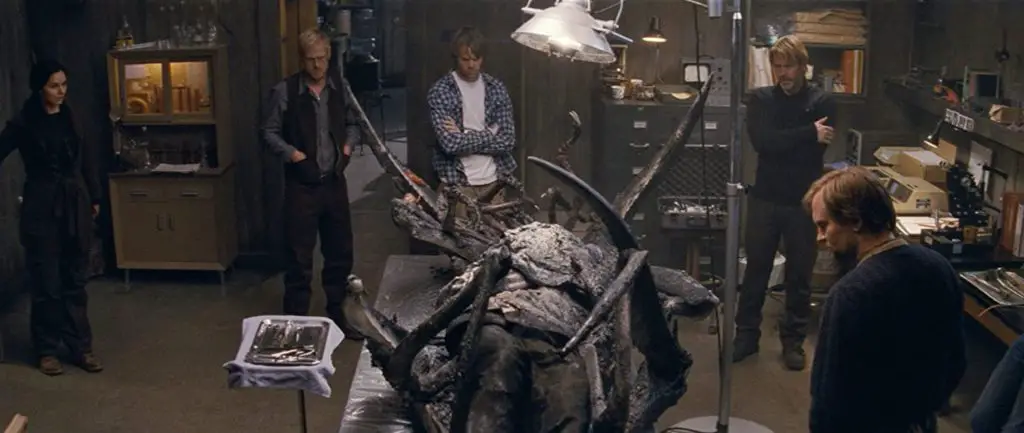
Untouchable & Groundbreaking
#4 – The Thing (2011)
Arguably one of the best science fiction horror films ever made is John Carpenter’s The Thing (1982). In spite of initially receiving negative response from critics and fans alike, it would go on to set the bar high for action, storytelling, and gripping horror FX. It serves as a template as Psycho (1960) and Silence of the Lambs (1991) have done for other genres. Nonetheless, fanatics of the original were bound to see it with laser-sharp scrutiny. New generations are none the wiser, instead, being treated to a feast of lustful director Matthijs van Heijningen Jr’s reimagined CGI-riddled homage. Sadly, it misses out on its’ predecessor’s untouchable and groundbreaking FX and high-strung tension. But it does add a multi-layered story of human emotion and connection that Carpenter’s film bypassed altogether. The addition of a female protagonist explores a refreshing new character, akin to Ripley’s searing maternal angst warrior in Aliens (1986).
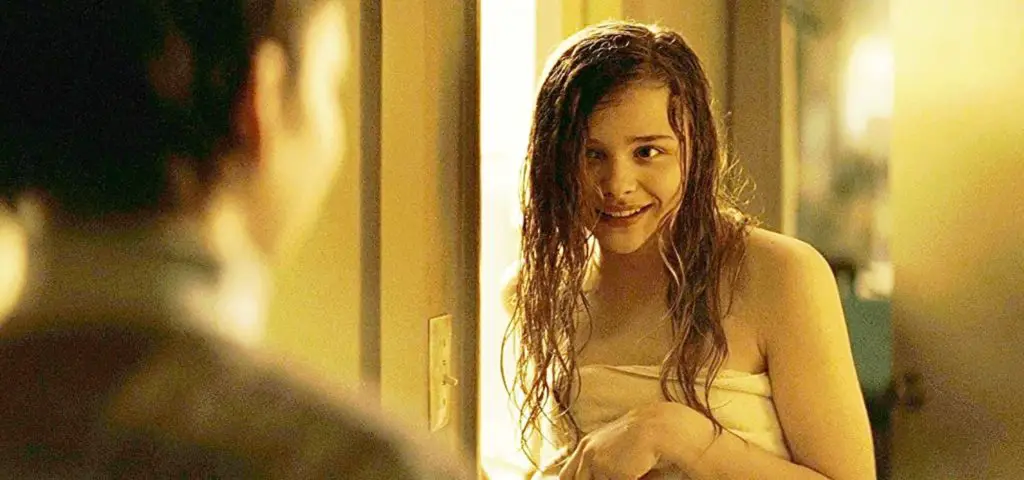
Vampire Horror Never Looked Better
#3 – Let Me In (2010)
For starters, Let Me In is a damn good vampire film. It takes inspiration from Let the Right One In (2008). Simply put, the remake is so good, Bloody Disgusting film critic Brad Miska wrote, “in comparing Let Me In with Let the Right One In, ultimately, if the Swedish version is near perfection, Matt Reeves’s version achieves complete supremacy. Masterpiece is an overused word, but it’s hard to think of another so powerful.[4]” That said, there isn’t much more to tell about Let Me In. Except that it must be seen, and explored, and then watched again. Truly, the film aims to be a masterpiece. Subtle, dark, gorgeous, the nuances, the coldness, and gripping scenes, aching with grief and regret. Coupled with the long extended silences between the two lead actors settle deep into one’s conscience—awkward pre-pubescent fascination with love and friendship, self-preservation, and immortality.
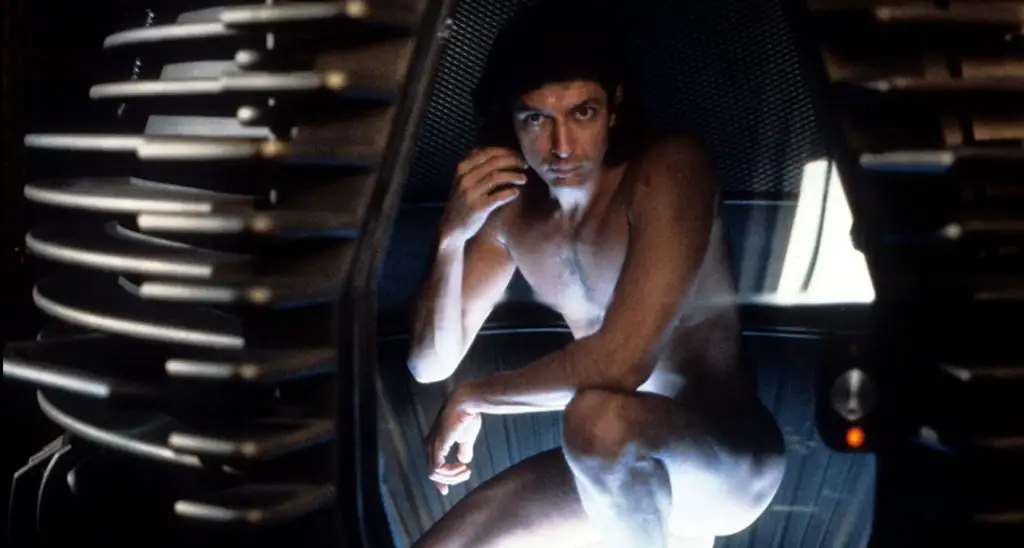
No-Holds Barred Must-See Horror
#2 – The Fly (1986)
When The Fly debuted in 1986, it disgusted horror fans (for all the right reasons). It racked up a BAFTA Award and an Academy Award for makeup and special effects, winning the statue for the latter. Furthermore, it made Jeff Goldblum and Geena Davis A-list movie stars. Not to mention, director David Cronenberg is a no-holds-barred kind of horror visionary. Between 1979 – 1988 he would release a hugely eccentric collection of horror films from his time immemorial catalog. Sparing no expense when it comes to sickening audiences with disturbing and violent images and gore, Cronenberg got his “grossest’ when he told the story of a scientist obsessed with experimenting on living organisms with a pair of molecular-genetic teleportation pods. Cronenberg took inspiration from the original 1958 cult classic. The fly-in-the-wrong-place-wrong-time science experiment supports both film’s plotlines, but the remake infused the concept with a punch of FX that the MPAA three decades before would’ve refused, never letting the film see the light of day.
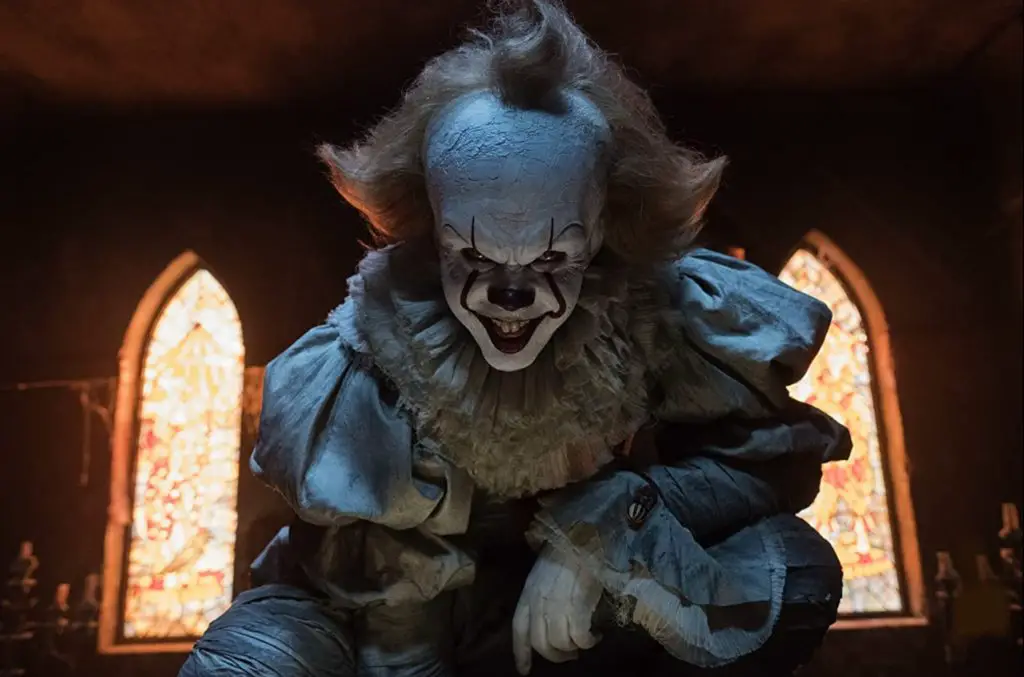
It.
#1 – It (2017)
The Exorcist (1973) is “the scariest” horror film ever made. In the same way Jason Voorhees took all the fun out of camping. Michael Myers created the “most successful” horror franchise. Scream (1996) and Ghostface completely overhauled the Slasher horror genre. However, no killer antagonist in horror history holds a candle to Pennywise – the scariest clown in the second most terrifying horror film ever made. Based on Stephen King’s novel and inspired by the groundbreaking television miniseries, no other horror film has exploited childhood trauma and the disturbing collateral damage. Exposing repressed emotion, denial, vulnerability, and Mnemophobia, the fear of the past. Pennywise arrives every 27 years “feasting on the flesh of humans simply because our fears are easy to manifest and they make us taste better.[5]” However, Pennywise meets his match when he discovers that the bullied children he’s long been hangry to devour have grown up, and have come prepared to put their fears to rest.
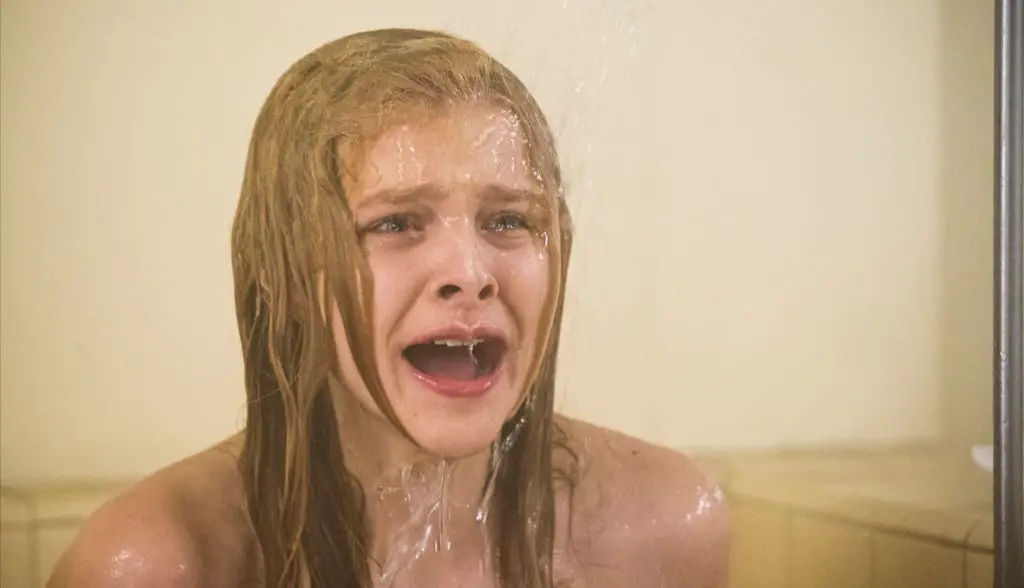
Horror Remakes and the Perpetual Fascination
A horror remake must be original. Under no circumstance should the story mimic or repeat what audiences have seen before. And by all means, a horror remake should include critical elements of the original – like a glove with razor blades, a hockey mask, a book bound in human skin, a child’s doll, or a puzzle box.
However, other films, such as Carrie (2013) and Evil Dead (2013) have also become wildly reimagined favorites, respectful and celebrated. Candyman (2021), leads with an all African American cast. Likewise, 2022 will see the Scream reboot, The Changeling, Children of the Corn, Firestarter, and the long-awaited Hellraiser (2022) – with a female Pinhead – will no doubt continue the perpetual fascination with horror remakes. Stay tuned for our list to update when the next killer remakes hit the big screen!
[1] “We Are What We Are (2013 film) – Mp3 Music Search Download.” http://wikipedia.us.nina.az/wiki/We_Are_What_We_Are_(2013_film). Accessed 28 Sep. 2021.
[2] “Top 10 Visual Effects of the 80s | ScreenRant.” 11 Mar. 2020, https://screenrant.com/best-80s-visual-effects/. Accessed 28 Sep. 2021.
[3] https://bloody-disgusting.com/news/3316478/review-town-dreaded-sundown-mixed-bag/?utm_source=rss&utm_medium=rss&utm_campaign=review-town-dreaded-sundown-mixed-bag
[4] Miska, Brad (October 1, 2010). “Let Me In (Let the Right One In remake) Movie Info, Review, Headlines, Gallery”. Bloody Disgusting.
[5] “Pennywise Explained: What Exactly Is Stephen King’s IT? – Collider.” 6 Sep. 2019, https://collider.com/it-pennywise-explained/. Accessed 28 Sep. 2021.
